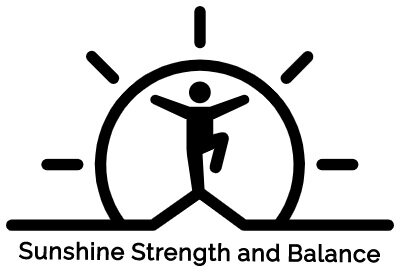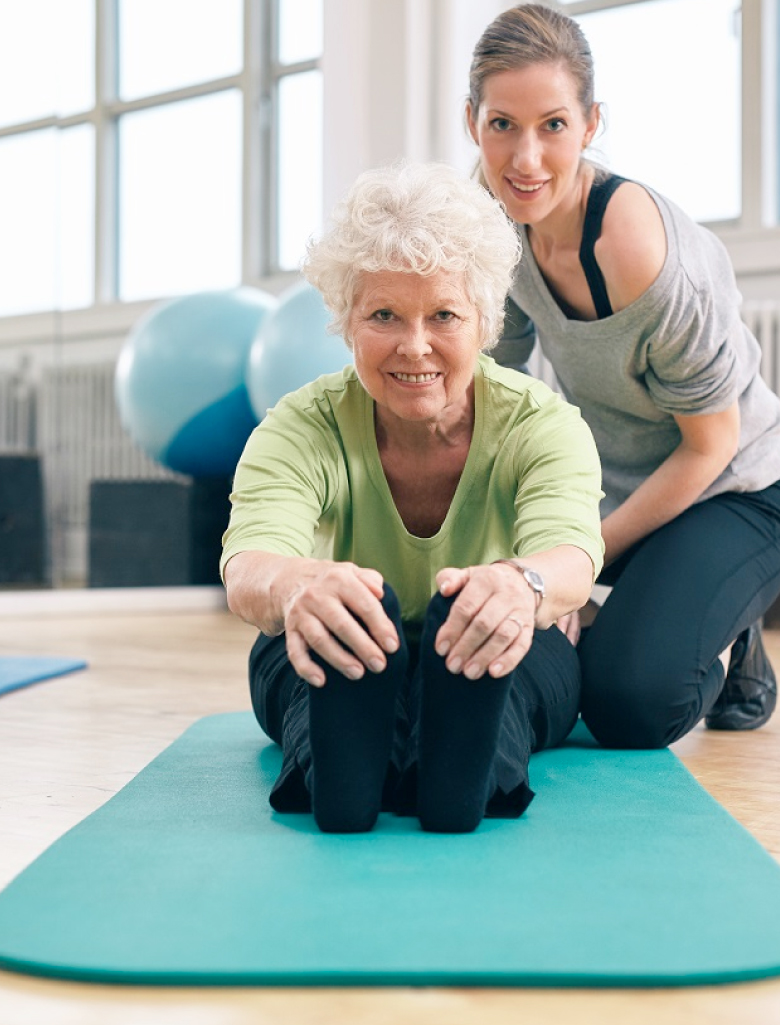Working on range of motion is key to achieving greater body flexibility and overall health right from your own home. With specific and targeted exercises, individuals can experience a significant decrease in stiffness, while also lowering their risk of bodily injuries. Surprisingly, these exercises not only assist in increasing range of motion but can also enhance balance, coordination, and posture which are critical for daily physical activities. So let’s take the first step together in this journey towards enhanced mobility and well-being.
One effective exercise for range of motion is the Spine Circle, which moves the entire spine through its full range of motion while stretching and activating supporting muscles. Another beneficial exercise is the Standing Spine Side Bend, which targets lateral trunk flexibility for improved spinal mobility. Always consult with a fitness professional before starting any new exercise routine.
Understanding Range of Motion in Home Fitness Training
Range of motion refers to the extent of movement a joint can achieve in different directions. In the realm of home fitness training, it’s crucial for sustaining overall joint health and preventing stiffness or discomfort. Engaging in exercises tailored to enhance your range of motion actively contributes to improving flexibility and, consequently, your efficacy in various physical activities.
When you think about it, having a good range of motion means you can move freely and comfortably. For example, being able to reach up to grab something from a high shelf without feeling pain or tightness in your shoulder joint. It’s like giving your body more room to breathe and adapt to different movements without strain or resistance.
Apart from the immediate benefits, regular range of motion exercises are also valuable for improving balance, posture, and coordination. When our joints move freely without obstruction, we can maintain better posture in daily activities, reducing the risk of muscular strain or chronic pain.
Imagine sitting down on the floor and needing to get back up without using your hands for support. Having good hip and knee joint mobility will make this transition feel natural and smooth, while limited range of motion may cause discomfort or difficulty in performing the action.
Now that we understand how crucial range of motion is for our overall physical well-being, let’s delve into specific exercises that can help us maintain and expand our range of motion. These exercises can be seamlessly incorporated into your home fitness routine, enhancing joint flexibility and overall mobility.
By harnessing the power of these targeted exercises, you’re laying a robust foundation for achieving improved flexibility and dexterity. Now, let’s explore techniques for elaborate limb and spine stretching that can elevate your range of motion even further.
Elaborate Limb and Spine Stretching Techniques
Flexibility in our limbs and spine is crucial for everyday movements and overall bodily functions. When it comes to improving flexibility and range of motion in our legs, exercises like toe touches, hamstring stretches, and quadriceps stretches work wonders. These exercises not only enhance flexibility but also promote agility and strength.
Toe Touches
Toe touches are a great way to improve flexibility in the hamstrings and lower back muscles. Performing this exercise involves standing with feet shoulder-width apart, bending at the waist, and reaching towards the toes. It’s important to go as far as is comfortable, feeling a gentle stretch but not pushing to the point of pain. Engaging in regular toe touch exercises can gradually lead to increased flexibility in the legs, allowing for wider ranges of motion during daily activities.
Hamstring Stretches
Similarly, hamstring stretches involve sitting on the floor with one leg extended and the other bent inward. Leaning forward toward the extended leg allows for a gentle stretch in the hamstring muscles. This can be alternated with each leg to ensure both are being adequately stretched.
Quadriceps Stretches
Quadriceps stretches involve grabbing one foot behind you and bringing it towards your buttocks while keeping your knees close together. This type of stretching can be particularly helpful for improving range of motion in the knee joint, especially for those who may have tight or sore leg muscles.
Now let’s shift our focus to spine stretching techniques. Our spine supports us in almost every movement we make, so maintaining its flexibility and alleviating any stiffness is crucial. The cat-cow stretch is a great exercise that involves moving between arching and rounding the back while on all fours. This dynamic stretch helps to gently warm up and mobilize the spine, enhancing its flexibility over time.
Seated Spinal Twists
Seated spinal twists are another beneficial exercise for promoting spinal flexibility. By gently twisting the upper body from side to side while seated, individuals can stretch and release tension in their back muscles, helping to maintain healthy spinal function.
Gentle Backbends
Lastly, incorporating gentle backbends into a fitness routine can aid in fostering spinal flexibility. By arching backward in a controlled manner and engaging specific back muscles, individuals can alleviate stiffness and improve overall spinal mobility.
These varied exercises should be done consistently to ensure maximum benefit in terms of improved range of motion and enhanced flexibility throughout the body.
By incorporating these limb and spine stretching techniques into your fitness regimen, you can gradually increase your flexibility and range of motion, leading to improved overall physical performance and reduced risk of injury.
Bodyweight Exercises for Flexibility
When it comes to improving flexibility through bodyweight exercises, yoga takes the lead. Yoga emphasizes combining breathing techniques with an array of postures designed to boost flexibility and overall mobility. Engaging in regular yoga sessions can result in significant improvements in joint suppleness and mobility, making daily tasks easier and more comfortable.
On the other hand, Pilates prioritizes core strength and stability while also addressing muscle flexibility. The controlled movements in a Pilates routine not only help enhance flexibility but also contribute to improved posture and balance.
For those seeking a mind-body approach to flexibility improvement, tai chi offers a low-impact option. This ancient Chinese martial art involves slow, deliberate movements and deep breathing. The gentle, flowing motions help maintain or increase flexibility and balance, making it particularly beneficial for individuals aiming to be mindful while enhancing their range of motion.
It’s crucial to pay attention to proper form and alignment during these bodyweight exercises to avoid strain or injury. Each movement should be executed mindfully, gradually working towards greater flexibility and range of motion.
These exercises offer a holistic approach to enhancing flexibility by uniting physical movements with mental focus and relaxation techniques. Regardless of the chosen method, consistency is key in reaping the benefits of improved flexibility through bodyweight exercises like yoga, Pilates, and tai chi.
By incorporating these exercises into your fitness routine, you can experience increased joint suppleness, reduced muscle tension, and enhanced overall mobility. If you’re looking to comprehensively improve your flexibility, bodyweight exercises are an effective choice that caters to both physical and mental well-being.
As we transition from the realm of flexible motion to strengthening resilience, let’s explore the role of resistance training in promoting joint health.
Resistance Training for Joint Health
Resistance training is like a secret weapon that can help keep your joints in good shape. It involves working your muscles against some kind of force, like the stretch from a resistance band or the weight of a small dumbbell. By doing this, you’re not only strengthening your muscles but also improving the stability and function of your joints.
How does it work?
When you engage in resistance training, your muscles have to pull on your bones to move them. This pulling motion increases bone density and strength, which helps protect your joints from injury and damage. By strengthening the muscles around your joints, you’re essentially providing them with a support system that helps keep everything in place and working smoothly.
So, what are the best resistance exercises for joint health?
Let’s take a look at a few examples:
Bicep Curls
When done correctly, bicep curls target the muscles in your arms and shoulders. These are helpful for activities that require lifting or reaching movements, such as placing items on high shelves. By supporting these movements, you ensure that your shoulder joint remains flexible and strong.
Lateral Raises
Lateral raises target the muscles in your shoulders which are crucial for maintaining shoulder joint stability. Strong shoulders reduce the likelihood of injury when performing daily tasks that involve lifting or carrying objects.
Squats
Squats are great for overall lower body strength and stability. They engage multiple muscle groups including the quadriceps, hamstrings, glutes, and even the core. This exercise supports better hip and knee joint health by strengthening the surrounding muscles and enhancing overall lower body function.
For instance, imagine trying to open a sticky jar lid. By engaging in resistance training, you’re essentially giving yourself a better chance at opening that fiercely shut lid without straining any joints or muscles.
Incorporating these resistance exercises into your fitness routine will not only strengthen your muscles but also provide added support for your joints, ultimately leading to improved range of motion and long-term joint health.
Ready to explore how aerobic movements can further enhance your mobility? Let’s shift gears and venture into the realm of sustained physical activity targeted at boosting overall flexibility and stamina.
Aerobic Movements for Mobility Enhancement
Aerobic exercises are fantastic for improving mobility as well as overall fitness. These movements involve using big muscle groups repeatedly and rhythmically, which helps improve heart and lung health while also enhancing flexibility. Let’s take a closer look at how aerobic exercises can specifically contribute to improved range of motion in the joints.
- Walking: Walking is one of the easiest and most accessible aerobic activities for improving joint mobility. It is low-impact and can be done almost anywhere. By incorporating regular walking sessions into your routine, you can experience an increase in blood flow to the muscles and joints, which ultimately contributes to greater flexibility.
- Cycling: The action of pedaling while cycling engages many muscle groups, particularly in the legs. This repetitive movement helps to loosen up tight muscles and promote increased range of motion in the hips, knees, and ankles.
- Swimming: Swimming is a fantastic full-body workout that supports joint mobility with its low-impact nature. The resistance provided by the water strengthens the muscles surrounding the joints while allowing a wide range of motion. Regular swimming sessions can lead to noticeable improvements in overall flexibility and joint health.
It’s important to highlight that consistency is key when it comes to reaping the benefits of aerobic exercise for mobility enhancement. Regularity in your workouts will lead to gradual but significant improvements in your overall range of motion.
The Benefits of Aerobic Exercise on Joint Health
- Improved Blood Circulation: The increased heart rate during aerobic exercise promotes better circulation, delivering essential nutrients to the joint cartilage and aiding in the removal of toxins through lymphatic fluid transportation.
- Enhanced Flexibility: Regular aerobic exercise has been linked to noticeable increases in joint mobility and reduced muscle stiffness, enabling individuals to move more freely with less discomfort.
- Cardiovascular Health: In addition to its impact on joint health, aerobic exercise plays a crucial role in maintaining optimal cardiovascular function, promoting longevity, and reducing the risk of various chronic diseases.
By incorporating these aerobic movements into your fitness routine, you can pave the way for improved joint health and enhanced flexibility. Whether it’s walking, swimming, or cycling, each activity offers unique benefits that contribute positively to your overall mobility and range of motion.
Moving on from exploring these productive exercises, let’s now turn our attention to understanding what equipment is vital for effective home fitness training.
Necessary Equipment for Home Fitness Training
In home fitness training, the right tools can make a significant difference. Essential equipment such as yoga mats, resistance bands, light dumbbells, and a stability ball can greatly enhance various aspects of fitness, including flexibility, strength, and balance. Let’s delve into these items to understand how they contribute to an effective workout routine.
By incorporating essential pieces of equipment into your home fitness regimen, you can create a well-rounded workout environment that caters to your flexibility and mobility goals.
To explore a wide range of fitness equipment with proven benefits for improving flexibility and range of motion, visit Sunshine Strength and Balance.


